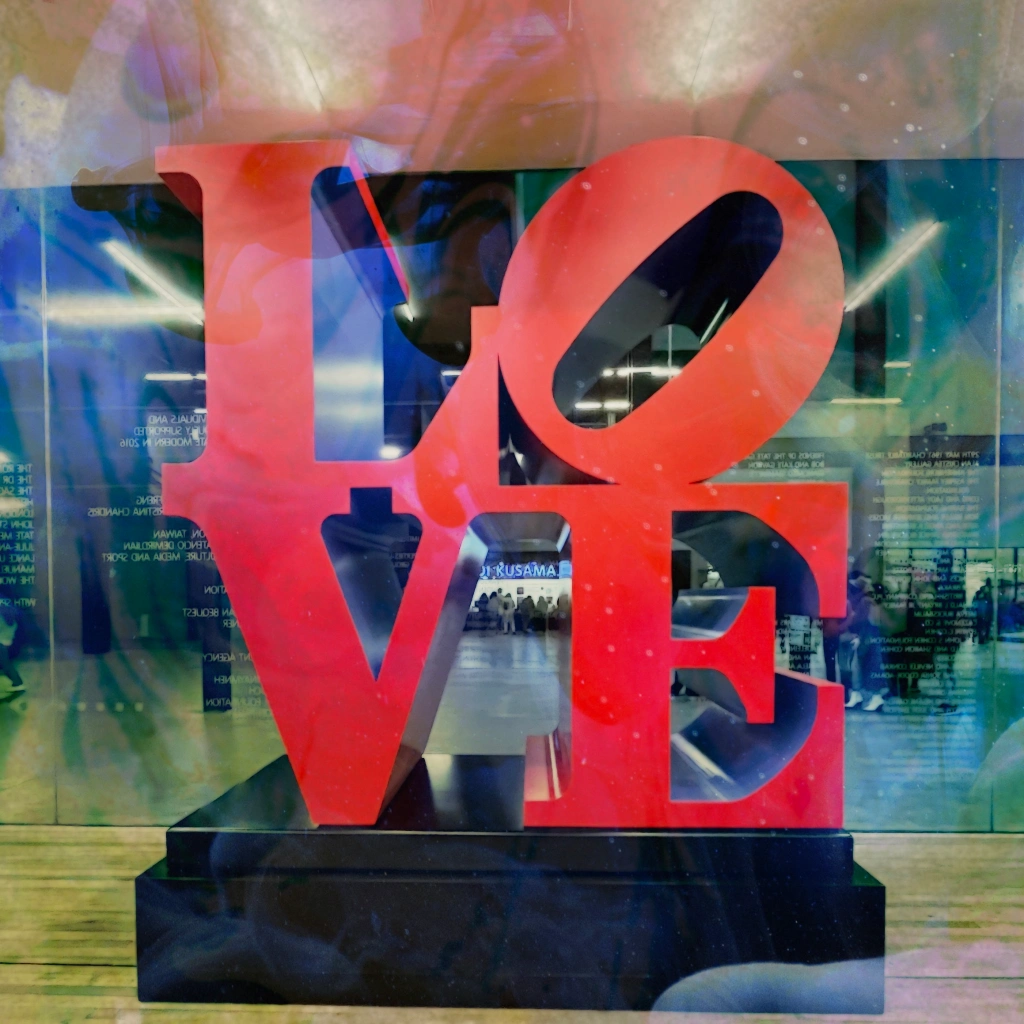
It was a rainy London day. I braved the wet and headed to South Kensington Station. I had heard the Victoria and Albert Museum was opening an exhibition of kimonos and I was curious to see it.
Since the 1600s, when Japan started slowly opening its borders to trade with the West, the kimono has had a major influence on the way people dress. Traders from the Dutch East India Company first took padded kimonos back to Holland in the 17th century and they became prized dressing gowns for men.
Women also fell in love with its rich fabrics and their influence on fashion was at its height during the second half of the 19th century when the Japonism movement swept through Europe and the United States.

Kimono: Kyoto to the Catwalk was to be the first exhibition of its kind in Europe. It was to show the history of this dress and its influence on pop culture today.
The curators managed to walk that fine line between cultural appreciation and appropriation. One that many seasoned designers often crossed.
There were howls of criticism when John Galliano sent out models made up to look like geishas in clothes heavily inspired by traditional Japanese dress. It was the infamous 2007 Christian Dior’s Spring Haute Couture collection.
“Cultural appropriation!” was the cry.
“My culture is not a costume,” many roared.
They said it smacked of cultural imperialism; that it simplified centuries of culture to a stereotype; that designers, like Galliano, were raiding the intellectual property of the East for profit.

Kimono: Kyoto to the Catwalk seems to suggest otherwise. From Bjork to Madonna to Freddy Mercury, it proudly displayed the influence their traditional dress has had on Western fashion and culture.
Wear that kimono. Take elements of the obi and change it to suit. The centuries old Japanese culture was robust enough to cope. In fact, they relished it.
It made me wonder where the boundaries of cultural imperialism were and who indeed were the perpetrators. I then got distracted by the beautiful patterns and structure of the dresses in front of me.
Oh, pretty dresses!

They were exquisite.
Some of the earlier kimonos were influenced by nature and the five elements. Earth, air, water, metal and wood. Painstakingly stitched and woven, there were maple leaves, cranes and bamboo motifs on delicate silk. Colours were muted and beautifully subtle.
Symbolism mattered. Style, motif, colour, and material all worked together to highlight the identity and status of the wearer. Purple, for example, has been used in the past to mean undying love. They say it’s because the gromwell (murasaki), the plant used to create the dye, has very deep roots.
Red may be popular in the West, but it’s also flashy. It signifies glamour and allure. Best kept as garments for young women. It’s the darker colours that often signify deeper virtues. Black, for example, has been used to symbolise wisdom.

The kimono explodes with bright colours and modern patterns in the twentieth century. Gone are the old symbols. In their stead are images of cars, trains and planes. Geometric shapes clashed. And forget about the elaborate shoes, women stomped home in black boots. Magnificent.
Yet it was interesting how the basic structure of the kimono remained the same. Still bound by tradition and unchanged for centuries.
Towards the end of the exhibition, I couldn’t help feeling a tiny bit awed and a little envious about the kimono’s profile in Western history.
It’s because we have a traditional dress in Korea as well. It’s called a hanbok. It’s had an interesting past. One of change, of sorrow and defiance, as well as its more recent resurgence in many different forms.
It holds the history of my ancestors and I find it beautiful too.
Head out to the V&A gift shop and when you are facing its entrance, turn right and head all the way to the end of the corridor. There is a modest section on Korean art and design at the end. There you will find a display of two modern hanboks.
It was nice to see them there.






11 responses to “Silk and beauty: Kimonos on display at the V&A”
As with your feelings about hanbok, kimono hold some sense of cultural beauty for me. But my more pragmatic sensibilities overshadow anything more. I grew up wearing them for formal occasions in Japan, so I also equate them with a physical (and perhaps cultural) sense of restriction and discomfort. As for the appropriation aspect, whether as a whole or in part, I think it depends upon the reasoning. When done merely as an approach to something beautiful, even if not fully understood culturally, I don’t see anything wrong. But when it’s applied to “fashion” in the pursuit of making-a-buck… yeah, that’s where things can get “tacky” and acquire the potential for offense. I wrote about this last August: (replace the DOT) luminousaether.wordpress(DOT)com/2018/08/26/cultural-appropriation/
LikeLike
No worries. I will check it out!
LikeLiked by 1 person
Looks like I had read it! My apologies LT for being so forgetful. What I liked was you being unashamedly you despite what your more traditional relatives stated. Appropriating what you want from the west to help you and keeping what you want from your heritage. I wonder though in our drive to “modernise” we lose our connection with the past. In terms of my own heritage, I think it is good to remember some of its strengths no matter how painful it is to remember other aspects of it. There’s a movement among young people in Seoul to bring the Hanbok back into everyday wear. Its sometimes sad history has been replaced by a sense of pride and delight in its form. I like their optimism and a type of “reclaiming” of their heritage. A heritage that I only loosely share through my ethnicity I have to add. And yes, I do agree with you. Appropriation for the sake of profit is rather tacky.
LikeLiked by 1 person
My apologies… I should have noticed that you’d read it before. And I agree about that “connection with the past,” and with the idea of taking pride in both its physical and cultural beauty. Curiously, Japanese culture seems inherently able to absorb ideas from other cultures, perhaps a bit too easily. I’ll readily admit that it would sadden me greatly to see kimono become little more than a cultural anachronism. And it’s the young who will ultimately decide… whether Kimono or Hanbock.
LikeLiked by 1 person
Oh no! Please don’t apologise for that! That fast absorption of culture can be a great strength. As an observer, I always thought Japan balanced well what to keep and what to take on. I always felt Korea didn’t do so well in that regard leading to a period of great suffering, particularly after the Korean War. Now I wonder if they’ve gone too far in the other direction. But like you suggest, we shall see!
LikeLiked by 1 person
I would love to see this exhibition. Thanks for sharing 🙂
LikeLiked by 1 person
Len! Hello! It was beautiful. I hope you can see it sometime!
LikeLiked by 1 person
Absolutely gorgeous!!!
LikeLiked by 1 person
They were beautiful!
LikeLike
These are beautiful. I heard the weather has been a little dreary out there. 😦
LikeLiked by 1 person
It’s ok. There have been a few wet days, but it isn’t always so! And it’s beautiful when the sun is out!
LikeLiked by 1 person